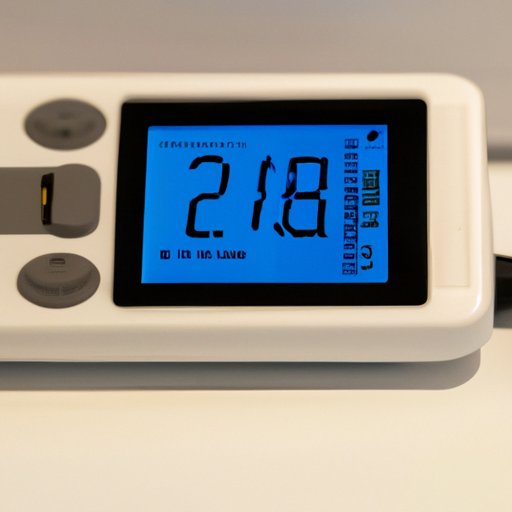Introduction
Electrical devices are an essential part of our daily lives, from our phones and laptops to our refrigerators and air conditioners. However, these devices require energy to operate, and their energy use can have a significant impact on our environment and our wallets. This is where understanding energy conversion and efficiency rates comes into play. In this article, we will explore how electrical devices convert energy, the different factors that affect conversion rates, and how to maximize energy efficiency.
Understanding Electrical Device Energy Conversion: A Guide to Efficiency Rates
Energy conversion is the process of transforming electrical energy into another form of energy, such as mechanical or heat energy. Efficiency rates refer to the amount of energy that is converted into the desired form compared to the total energy used. Understanding efficiency rates is essential as it helps identify devices that are wasting energy and can lead to significant cost savings over time. Some examples of devices with high efficiency rates include LED light bulbs, solar panels, and electric cars, while devices with low efficiency rates include incandescent light bulbs and old refrigerators.
Measuring Efficiency: The Importance of Evaluating Energy Conversion in Electrical Devices
Measuring efficiency is crucial in evaluating the energy use of an electrical device. One way to measure efficiency is by using power meters or energy monitors to measure the energy consumed by the device. Understanding how much energy your devices are using can help identify where you can save money on your energy bills. For example, identifying energy-hungry devices in your home like old televisions that consume a lot of energy even when not in use can lead to significant cost savings on your power bill over time.
Breaking Down Energy Conversion Rates in Electrical Devices
Energy conversion rates are affected by various factors such as losses in energy sources, including heat and resistance. Some devices like newer models of refrigerators are designed to reduce energy loss and increase energy conversion rates. In contrast, others, such as outdated air conditioners or incandescent bulbs, tend to lose a lot of energy as heat. Wattage is another factor that affects energy conversion rates. The higher the wattage, the more energy a device will consume. For example, a television with a higher wattage rating will consume more energy than a TV with a lower wattage rating.
How to Calculate the Efficiency Rate of an Electrical Device
Calculating the efficiency rate of an electrical device is an essential step in identifying where you can save money on your energy bills. First, you will need to measure the energy used by the device and the energy output in the desired form. Then, you can calculate the efficiency rate using the following formula: efficiency rate = energy output/total energy used x 100%. It’s important to use accurate measurements and data to ensure that your calculation is correct.
Is Your Electrical Device Wasting Energy? Understanding Conversion Rates
Understanding conversion rates can help identify devices that are wasting energy. Common causes of wasted energy in electrical devices include inefficient designs and outdated technology. For example, an old refrigerator may consume a lot of energy even when it’s not in use, leading to higher energy bills. Identifying these energy-hungry devices and replacing them with newer, energy-efficient models is a great way to reduce your energy bill and help the environment.
Maximizing Energy Efficiency: Tips for Evaluating Device Conversion Rates
There are several practical tips for evaluating the efficiency of electrical devices. First, it’s important to research and compare devices before purchasing. Look for models that are Energy Star rated or labeled as energy-efficient. It’s also important to check the wattage rating of a device and opt for models with lower wattage. Additionally, you can consider using power strips or smart power strips to reduce energy waste caused by devices that consume energy even when not in use.
Conclusion
Understanding energy conversion and efficiency rates is essential in identifying where you can save money on your energy bills and reduce your environmental impact. By measuring efficiency, breaking down energy conversion rates, and following practical tips for evaluating device conversion rates, you can maximize energy efficiency and reduce your energy use. Take a moment to evaluate the efficiency of your electrical devices and take steps to maximize energy efficiency to save money and help the environment.
